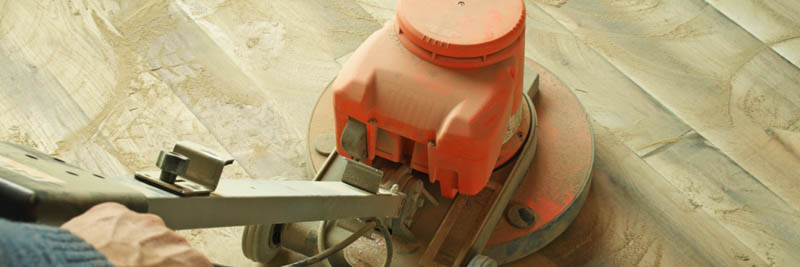We’ve talked at great length in the past about engineered wood floors. As a quick recap for you: Rather than being made up of solid wood planks, engineered wood floors are comprised of a hardwood “sandwich” with a core of plywood composite.
Engineered wood floors are great options for basements or bathrooms, if you have concrete sub-flooring, or are interested in eco-friendly flooring.
Engineered Wood Flooring FAQ
Engineered wood floors have only been around since the 1960’s, so you may not be overly familiar with them. As a result, you may have some questions you’d like answered before you decide to take the plunge and go with engineered wood floors.
And one of the first questions you may ask is, “Can you refinish engineered wood floors? What is the process like and what are the benefits?” These are good questions to ask, and it shows that you know that refinishing your wood floors is an important way to extend their life and keep them looking new!
So…Can Your Refinish Engineered Wood?
The short answer is … it depends.
It depends on the brand, quality, and thickness of the engineered floor you choose.
The top layer of the “sandwich” of an engineered wood plank can be anywhere from .6mm to 6 mm thick. If you have a plank of engineered wood that is thinner, then it may not be able to be completely refinished (sanded and then re-coated). Any sanding might sand right through the wood layer and reveal the plywood core.
Instead you would only be able to re-coat the wood to make it look shinier and hopefully cover shallow dents and scratches. The lifespan of these thinner woods is only about 20 years. Thicker engineered wood can stand up to multiple refinishing and will therefore last longer.
The Thicker, The Better
If you have a thicker plank of engineered wood, you are in luck! These can be sanded and refinished just like a floor made of solid wood. However, the amount of times they can be re-finished is usually less than solid wood – up to five times (whereas a hardwood floor refinishing service can be used up to 10 times). The thicker your plank of engineered wood, the better the chance they can be refinished, and the more times your floor will stand up to sanding and recoating.
Quality Matters!
If you do decide to choose engineered wood floors, make sure to choose a thicker plank from a recognizable brand that is known for the quality of their product. This means that you will be able to refinish your floors more often, extending their life and improving their appearance many times over the years.
The Process and Benefits of Refinishing Engineered Wood Floors
Refinishing your engineered wood floors is the same process, and done for the same reasons, as refinishing solid wood floors.
When your floors begin to show the wear and tear of daily use, refinishing makes them look new again. It improves the value of your house and extends the life of your wood floors.
Refinishing – best done by a professional – is the process of sanding off the remaining layer of coating and reapplying a finish to restore the shine and color of your floors.
It is especially important to be wary of trying to refinish engineered wood floors by yourself. Because they are often thinner than solid wood, an inexperienced DIY-er can sand right through the top layer of the plank, ruining the floor.
Some Things To Remember
Here’s what you need to remember about engineered wood floors: Depending on the thickness of an engineered wood plank, they can be refinished anywhere from 1 to 5 times. If you are putting engineered wood in a high-traffic area of your house, make sure to choose a thicker types so you can refinish your flooring to keep it looking new.
If you have any questions about engineered wood floors or refinishing them (including figuring out how thick your existing engineered wood floors are) make sure to give Ace Wood Flooring a call!


